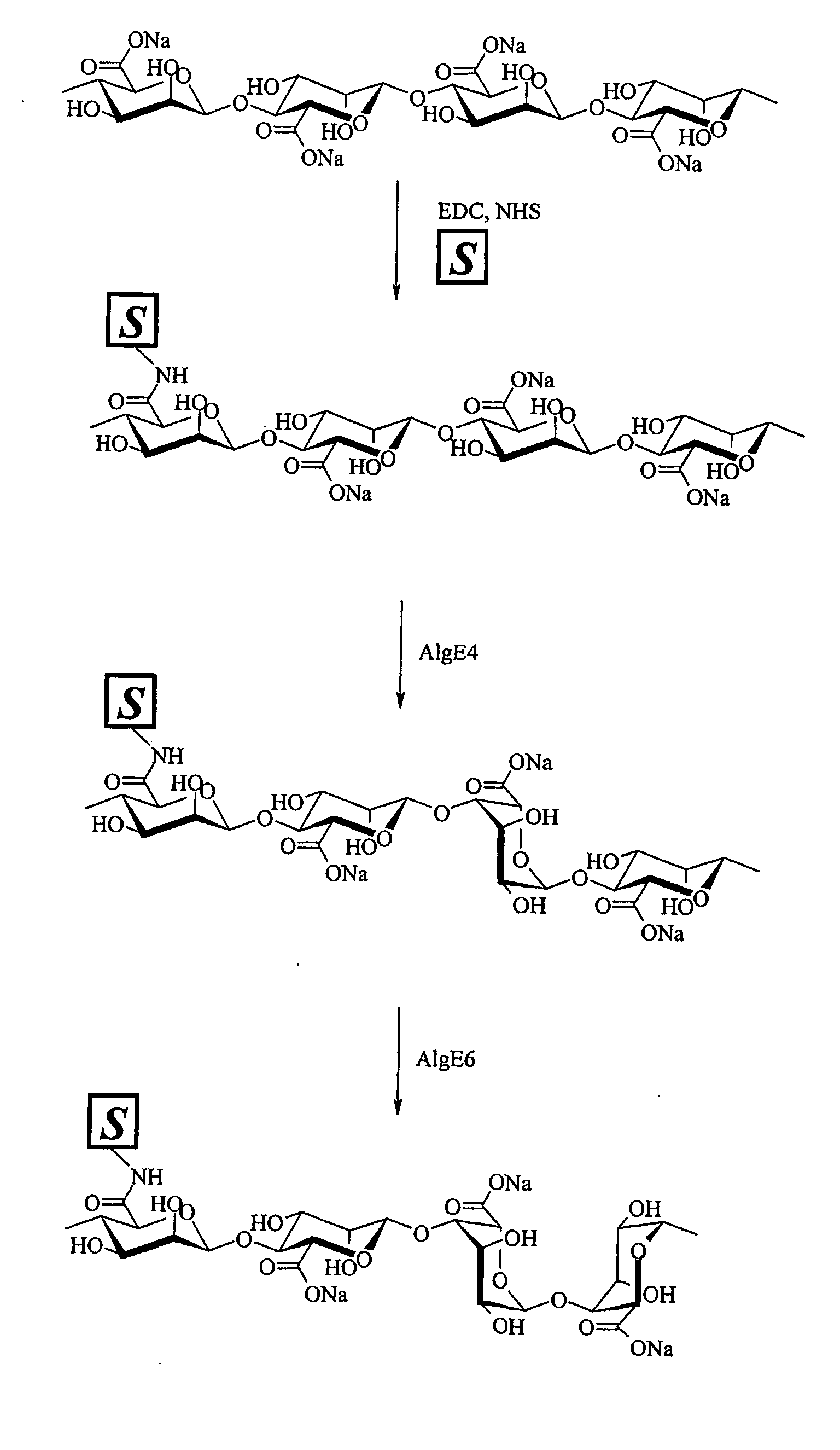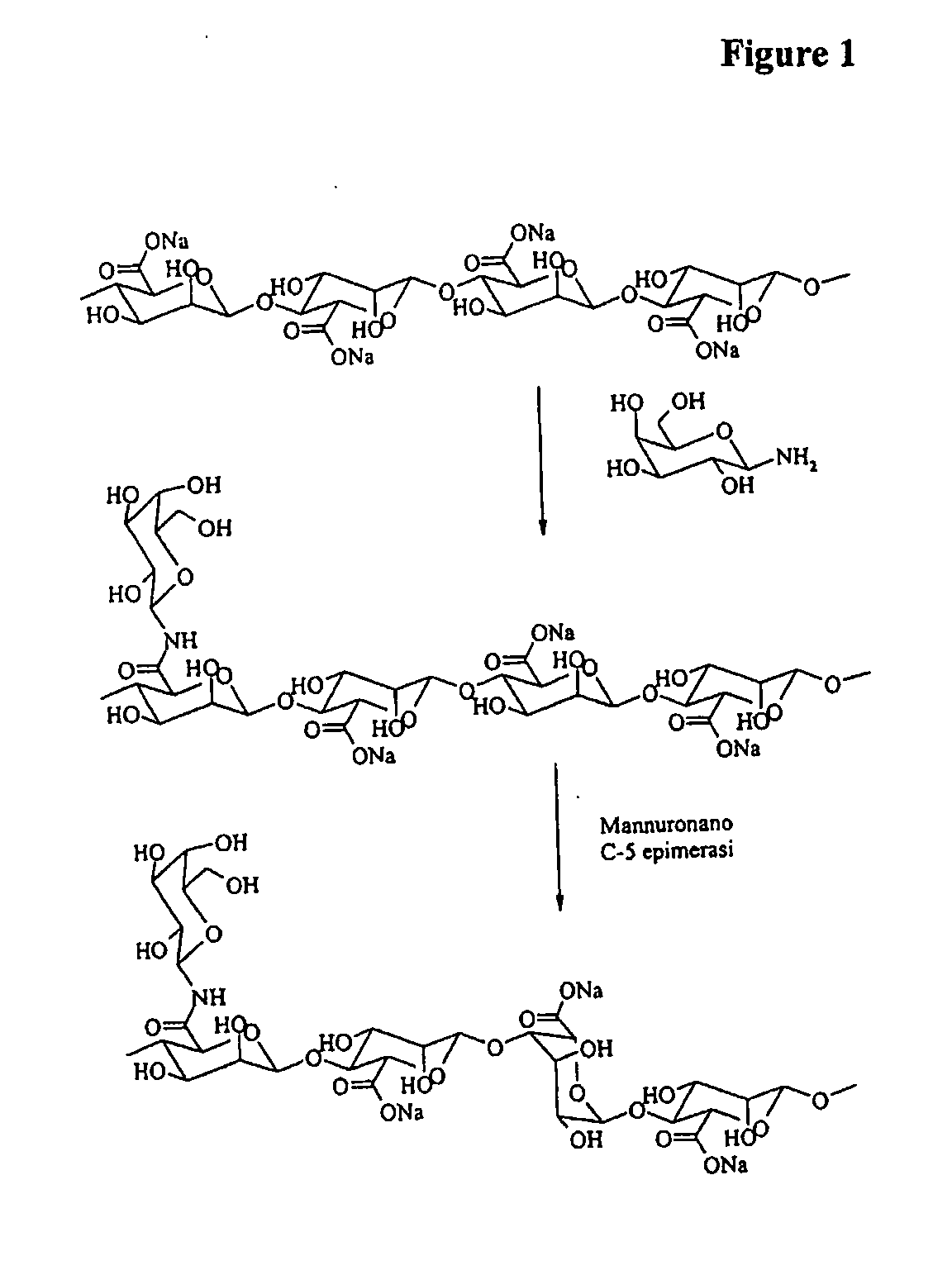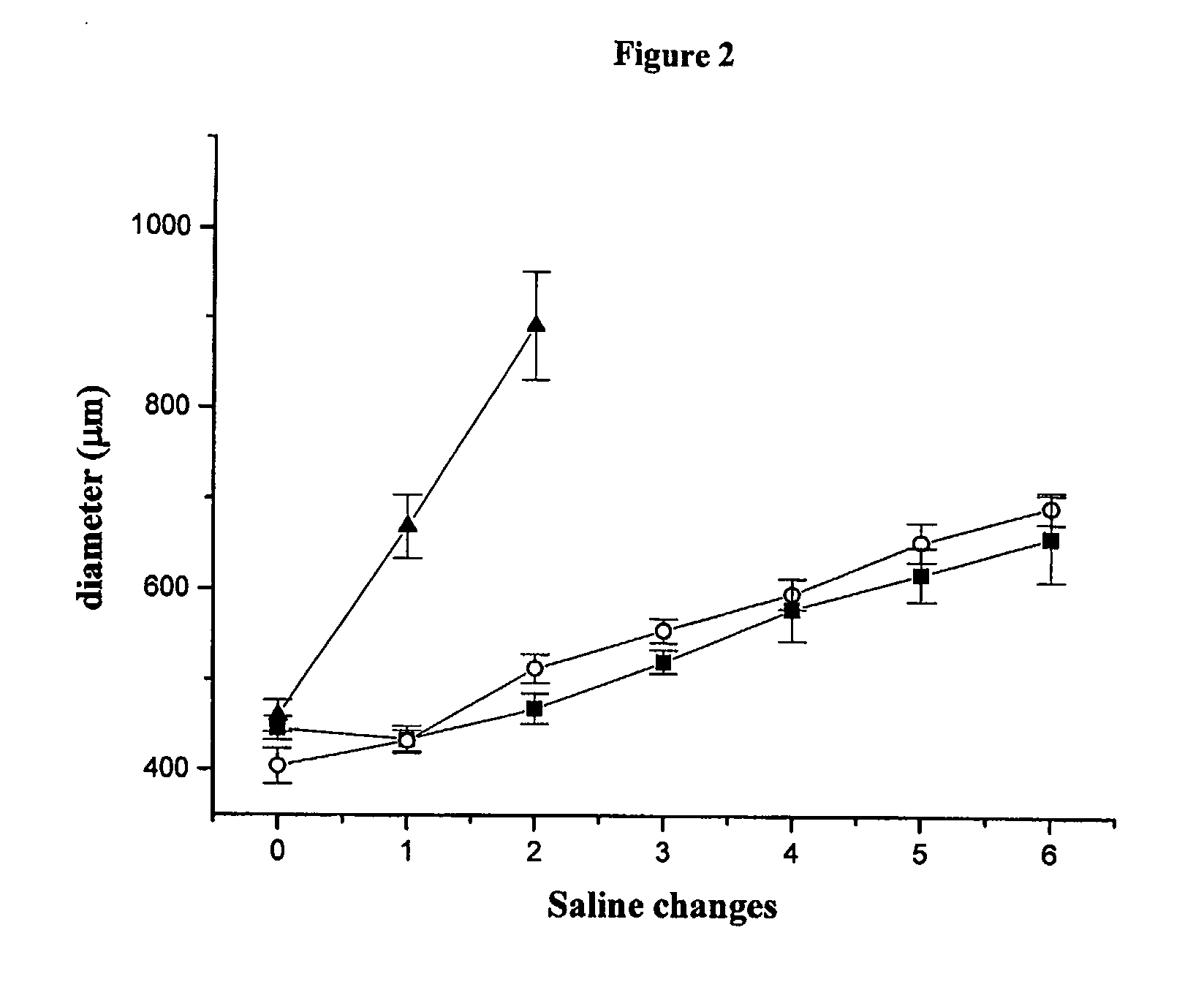Modified Alginates, Methods of Production and Use
- Summary
- Abstract
- Description
- Claims
- Application Information
AI Technical Summary
Benefits of technology
Problems solved by technology
Method used
Image
Examples
example 1
Preparation of Modified Polymannuronan with 1-Amino-1-Deoxy-Galactose
[0058]1-amino-1-deoxy-β-D-galactose (270 mg) was added to a stirred solution of the sodium form of polymannuronan (1.5 g) in 0.2 M 2-[N-morpholino]ethanesulfonic acid (MES) buffer (pH4.5, 400 mL) containing N-hydroxysuccinimide (NHS) (1.3 g) and 1-Ethyl-3-[3-(dimethylamino)-propyl]carbodiimide hydrochloride (EDC) (2.17 g). The solution was stirred for 30 minutes at room temperature. The product was dialyzed against deionized water through a dialysis membrane with a molecular weight cut-off of 12000-14000 for 5 days. The dialyzed product was freeze-dried to obtain the pure galactose derivative of sodium polymannuronan. Yield: 1.45 g. The degree of substitution, calculated from 1H-NMR, was found to be 12% The amide formation by this method was targeted to the carboxylic (uronic) group of the mannuronic acid present in the polymer, Those of skill in the art recognize that the degree of substitution of the product can ...
example 2
Synthesis of Methacrylate Esters of Polymannuronan
[0059]Sodium polymannuronan (3 g) was dissolved in 300 mL of deionized water and cooled to 4° C. in an ice bath. Methacrylic anhydride (23 g) was added dropwise with constant stirring to the cold polymannuronan solution and the pH maintained at 9.0 by addition of suitable quantity of 5M NaOH. The stirring was continued for 24 h at a temperature of 4° C. The reaction product was precipitated in 96% ethanol, centrifuged and washed 3 times with ethanol. The product was then dissolved in water and dialyzed against deionized water through a dialysis membrane with a molecular weight cut-off of 12000-14000 for 3 days. The dialyzed product was freeze-dried to obtain the pure methacrylate derivative of sodium polymannuronan. Yield: 2.6 g. The degree of substitution, calculated from the 1H-NMR is 8%. The ester formation by this method was targeted to the secondary hydroxyl groups present in the monomeric unit. Those of skill in the art recogni...
example 3
Epimerization of Modified Polymers by Using AlgE4
[0060]The modified polymannuronan sample obtained as described in Examples 1 and 2 (1 g) was dissolved in 50 mM MOPS buffer (ph6.9) containing CaC12 (2.5 mM) and NaCl (10 mM) at a concentration of 2.5 g / L. The G-5 epimerase AlgE4 was then added (enzyme / polymer weight ratio=1 / 200) and the solution was stirred for 24 h at 37° C. The epimerization reaction was quenched by addition of concentrated HCl to the cold polymer solution to a pH value of 1-2. The mixture was added of NaCl (final concentration 1.5%) and maintained overnight at 4° C. The precipitated product was centrifuged and washed with dilute HCl (0.05M) three times. The product was dissolved in deionized water maintaining the pH slightly above 7. The solution was added of NaCl (final concentration 0.2%) and precipitated with 96% ethanol. The product was filtrated, washed 3 times with ethanol and dialyzed against deionized water through a dialysis membrane with a molecular weig...
PUM
| Property | Measurement | Unit |
|---|---|---|
| Fraction | aaaaa | aaaaa |
Abstract
Description
Claims
Application Information
 Login to View More
Login to View More - R&D
- Intellectual Property
- Life Sciences
- Materials
- Tech Scout
- Unparalleled Data Quality
- Higher Quality Content
- 60% Fewer Hallucinations
Browse by: Latest US Patents, China's latest patents, Technical Efficacy Thesaurus, Application Domain, Technology Topic, Popular Technical Reports.
© 2025 PatSnap. All rights reserved.Legal|Privacy policy|Modern Slavery Act Transparency Statement|Sitemap|About US| Contact US: help@patsnap.com



